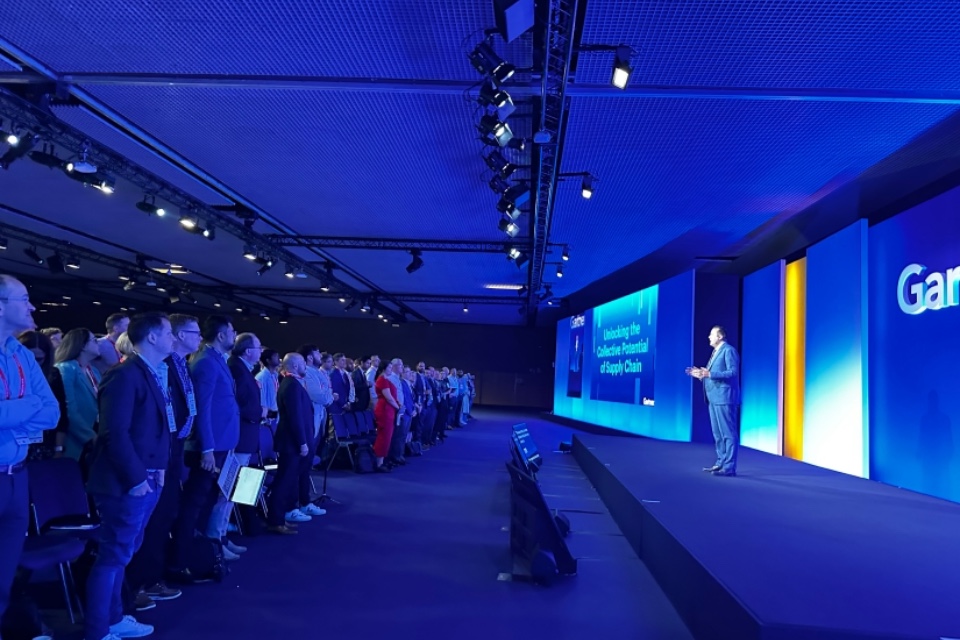Three fifths of frontline workers believe information shared on workplace screens helps them to become more engaged with their wider business (61%), more productive (59%) and more data literate (62%). The research signifies the immense impact access to information has on workplace engagement and productivity.
The study, developed by ScreenCloud and Google ChromeOS, sought to discover insights on the tech equity gap between information and deskless workers, prevalent in the world logistics and supply chain, and the impact this has on both engagement and productivity. ‘The State of Digital Signage: 2023-2024,’ draws on insights from 2,400 decision makers and employees across the largely deskless industries of manufacturing, logistics, transportation, and supply chain.
The research found that Almost 4 in 5 frontline workers (78%) believe office workers get more opportunities than they do due to their access to multiple workplace communication applications and digital information sources. This is supported by previous research which shows that just 1% of software venture funding goes towards enabling deskless workers. However, ‘The State of Digital Signage: 2023-2024,’ found that one communication channel which can help improve this sentiment is workplace screens, which nearly 8 in 10 workers (79%) expressed a positive perception towards.
“Deskless workers make up around 80% of the global workforce, so when we consider that these individuals do not feel that they receive the communication and opportunities afforded to their information worker counterparts, it’s no wonder that organisations are struggling with a disengaged workforce and therefore decreased productivity,” said Mark McDermott, CEO of ScreenCloud.
“Our research outlines that 78% of deskless workers do not have access to a company email address and 72% do not have access to a company intranet. Despite this, we often see organisations attempting to use these channels – and other platforms used to communicate with information workers – to connect with their frontline workforce. Not recognising the tech equity gap disadvantages deskless workers, creating a barrier to them becoming more engaged, more data-driven and more compliant with health and safety protocols. Everyone on the frontline deserves a more equitable technological experience, which digital signage can go some way to balancing. ”
“While workplace screens aren’t the silver bullet to solving the productivity puzzle and increasing engagement, they are uniquely well placed to impact these areas as part of an omni-channel communications approach. Digital signage is scientifically proven to be the most effective method to engage employees by stimulating their visual cortex, and when combined with behavioural science insights around screen location, placement, length of message, and so on, the outcomes are extremely powerful. Particularly for the deskless workforce, digital signage presents an opportunity to use the right channel, at the right time, with the right message, targeted towards the right person, instilling a sense of value and recognition.”
The research confirmed this, with leaders largely recognising the impact digital signage has on organisational operations. 86% of decision-makers confirm that screens improve productivity, accessibility (86%), health and safety compliance (87%) and job satisfaction (83%), with 85% stating the technology boosts employee morale. In addition, nearly half (43%) experienced a significant uplift in employee motivation and performance as a result of workplace screens.
Filipe Ho, Global Strategic Partnerships Lead at Google added: “This research underscores the immense potential of digital signage to bridge communication gaps, improve productivity, and enhance the overall well-being of deskless workers. In today’s world it’s imperative that every worker, from head office to plant floor, has the right information at the right time to perform in their roles. For organisations that want to better connect with their employees and unlock the full potential of their workforce, they should consider the importance of communication channels, as well as how that information is formatted, designed, and shared.”
To read the full ‘The State of Digital Signage: 2023-2024’ report, visit: https://try.screencloud.com/state-of-digital-signage-report






